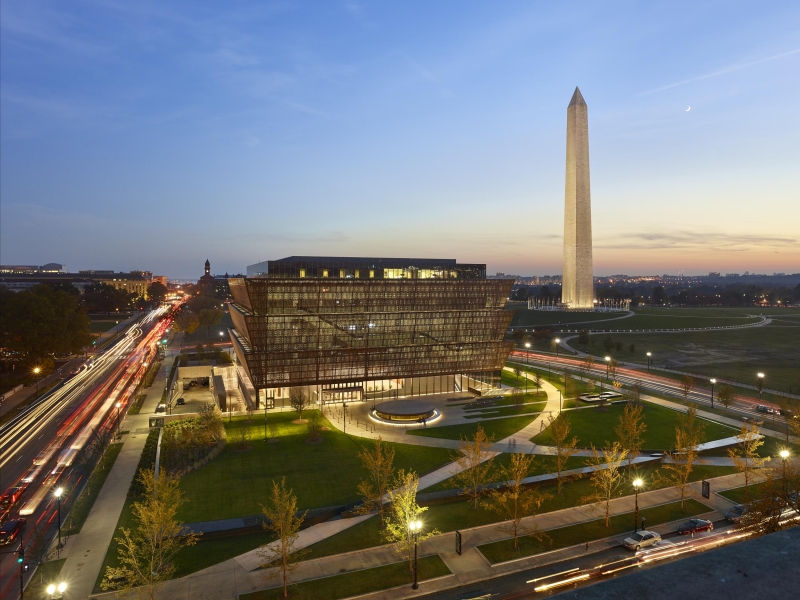
To commemorate Black History Month, Page celebrates the Smithsonian Institution’s National Museum of African American History & Culture. Operating simultaneously as a museum, memorial, and compelling space for cross-cultural collaboration and learning, the museum celebrates the Black community and highlights the immense impact that African Americans have made across the globe.
The building, situated on the National Mall, is a testament to the many Black individuals whose efforts and perseverance helped bring the museum to fruition. The idea of a museum commemorating African American history and culture had been discussed as far back as 1915, but the concept didn’t take shape until the late 1970s, leading to a legislative push fostered by Members of Congress John L. Lewis and Mickey Leland in 1988. Finally, the plan for a museum was established by an Act of Congress in 2003 and shepherded through its birth and early years by Lonnie Bunch, Director of the Museum from 2005 until 2019 and current Secretary of the Smithsonian Institution.
In 2009, an international design competition was held for this highly anticipated and culturally significant museum. But even before the competition, Davis Brody Bond, now a Page Company, and The Freelon Group had already begun collaborating on the programming and planning for the museum.
Ultimately, the winning design team included three renowned Black architecture firms: Davis Brody Bond, The Freelon Group; and Adjaye Associates. Smithgroup later joined the team, brought on for its specialized experience in building within the nation’s capital.

The founders of the three original firms were dubbed the “FAB team,” based on the first letters of their last names. Phil Freelon was a leading designer of African American museums before his death in 2019; David Adjaye is a well-known Ghanaian-British architect; and during J. Max Bond Jr.’s career as an architect, he designed African American historic sites, museums, and archives around the world. Sadly, Mr. Bond never saw their design fully realized, as he succumbed to his battle with cancer just before the 2009 design competition winners were announced.
The architects each contributed distinctive elements into the building’s design and structure, and their early collaboration culminated in the iconic corona form associated with the museum today. According to the Smithsonian website, “the corona is inspired by the three-tiered crowns used in Yoruban art from West Africa. Moreover, the building’s main entrance is a welcoming porch, which has architectural roots in Africa and throughout the African Diaspora, especially the American South and Caribbean.”

The ribbon-cutting for this historic museum provided an equally historic moment when the first Black US President, Barack Obama, cut the inaugural ribbon during the grand opening on September 24, 2016. This celebration marked the culmination of 100 years of tireless effort to tangibly recognize and pay tribute to the African American experience.
We are deeply honored that The National Museum of African American History & Culture is part of our legacy portfolio as a result of the important work accomplished by Max Bond of Davis Brody Bond, a Page Company, which joined our firm in 2023.









